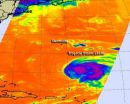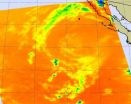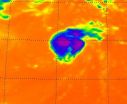(Press-News.org) ANN ARBOR, Mich.—The rhetoric is relentless: America is a place of unparalleled opportunity, where hard work and determination can propel a child out of humble beginnings into the White House, or at least a mansion on a hill.
But the reality is very different, according to a University of Michigan researcher who is studying inequality across generations around the world.
"Especially in the United States, people underestimate the extent to which your destiny is linked to your background. Research shows that it's really a myth that the U.S. is a land of exceptional social mobility," said Fabian Pfeffer, a sociologist at the U-M Institute for Social Research and the organizer of an international conference on inequality across multiple generations being held Sept. 13-14 in Ann Arbor.
Pfeffer's own research illustrates this point based on data on two generations of families in the U.S. and a comparison of his findings to similar data from Germany and Sweden. The U.S. data come from the ISR Panel Study of Income Dynamics, a survey of a nationally representative sample that started with 5,000 U.S. families in 1968.
He found that parental wealth plays an important role in whether children move up or down the socioeconomic ladder in adulthood. And that parental wealth has an influence above and beyond the three factors that sociologists and economists have traditionally considered in research on social mobility—parental education, income and occupation.
"Wealth not only fulfills a purchasing function, allowing families to buy homes in good neighborhoods and send their children to costly schools and colleges, for example, but it also has an insurance function, offering a sort of private safety net that gives children a very different set of choices as they enter the adult world," Pfeffer said.
"Despite the widespread belief that the U.S. provides exceptional opportunities for upward mobility, these data show that parental wealth has an important role in shielding offspring from downward mobility and sustaining their upward mobility in the U.S. no less than in countries like Germany and Sweden, where parental wealth also serves as a private safety net that not even the more generous European public programs and social services seem to provide."
Pfeffer is now expanding the number of countries he is analyzing, and is also examining the influence of grandparents' wealth.
Meanwhile, at the conference next week in Ann Arbor, participants from universities in Singapore, Sweden, Japan, Germany, Great Britain, South Africa and across the U.S. will share their ongoing research on different facets of intergenerational influences on inequality, from the timing of childbirth over generations to the impact grandparents, uncles and aunts have on educational attainment.
INFORMATION:
Information on Pfeffer's research: http://www-personal.umich.edu/~fpfeffer/cv_en.html
Working paper on Pfeffer's research, co-authored by Martin Hällsten, "Mobility Regimes and Parental Wealth: The United States, Germany, and Sweden in Comparison": www.psc.isr.umich.edu/pubs/abs/7676
Information on the conference, "Inequality across Multiple Generations":
http://psidonline.isr.umich.edu/Publications/Workshops/Multigen2012_Agenda.pdf
Established in 1949, the University of Michigan Institute for Social Research is the world's largest academic social science survey and research organization, and a world leader in developing and applying social science methodology, and in educating researchers and students from around the world. ISR conducts some of the most widely cited studies in the nation, including the Thomson Reuters/University of Michigan Surveys of Consumers, the American National Election Studies, the Monitoring the Future Study, the Panel Study of Income Dynamics, the Health and Retirement Study, the Columbia County Longitudinal Study and the National Survey of Black Americans. ISR researchers also collaborate with social scientists in more than 60 nations on the World Values Surveys and other projects, and the institute has established formal ties with universities in Poland, China and South Africa. ISR is also home to the Inter-University Consortium for Political and Social Research, the world's largest digital social science data archive. For more information, visit the ISR website at www.isr.umich.edu.
END
JEJU, SOUTH KOREA (September 5, 2012) — Will the tiger go the way of the passenger pigeon or be saved from extinction like the American bison?
The Wildlife Conservation Society (WCS) today released a list of Asian species that are at a conservation crossroads calling for governments to take immediate action with The Three R's Approach: Recognition, Responsibility, Recovery.
The list includes: the tiger, orangutans, Mekong giant catfish, Asian rhinos, Asian giant river turtles, and Asian vultures. The announcement was made at the IUCN's World Conservation Congress convening ...
Attention men: The day may be coming soon when you can take your own birth control pill with no side effects, according to a study done by a group of scientists that includes a Texas A&M University researcher.
Qinglei Li, an assistant professor in Texas A&M's College of Veterinary Medicine & Biomedical Sciences, is part of a team of researchers led by Martin Matzuk at Baylor College of Medicine and James Bradner at Dana-Farber Cancer Institute who made the discovery, and their work is published in the journal Cell.
Working on mice, the team found that a compound called ...
The National Human Genome Research Institute today announced the results of a five-year international study of the regulation and organization of the human genome. The project is named ENCODE, which stands for the Encyclopedia of DNA Elements. In conjunction with the release of those results, the Journal of Biological Chemistry has published a series of reviews that focus on several aspects of the findings.
"The ENCODE project not only generated an enormous body of data about our genome, but it also analyzed many issues to better understand how the genome functions in ...
The most-studied mass extinction in Earth history happened 65 million years ago and is widely thought to have wiped out the dinosaurs. New University of Washington research indicates that a separate extinction came shortly before that, triggered by volcanic eruptions that warmed the planet and killed life on the ocean floor.
The well-known second event is believed to have been triggered by an asteroid at least 6 miles in diameter slamming into Mexico's Yucatán Peninsula. But new evidence shows that by the time of the asteroid impact, life on the seafloor – mostly species ...
Montreal, September 5, 2012 – Being the last one picked for the team, getting left out of the clique of cool girls, having no one to sit with at lunch… For children, social exclusion can impact everything from emotional well being to academic achievements.
But what does it mean for the kids doing the excluding? Is the cure a one-size-fits-all approach that requires kids to include others, regardless of the situation at hand? Not necessarily, says new research from a professor now at Concordia University.
Unlike previous studies where researchers created hypothetical ...
CAMBRIDGE, MA -- Only about 1 percent of the human genome contains gene regions that code for proteins, raising the question of what the rest of the DNA is doing. Scientists have now begun to discover the answer: About 80 percent of the genome is biochemically active, and likely involved in regulating the expression of nearby genes, according to a study from a large international team of researchers.
The consortium, known as ENCODE (which stands for "Encyclopedia of DNA Elements"), includes hundreds of scientists from several dozen labs around the world. Using genetic ...
Infrared data from NASA's Aqua satellite shows that Tropical Storm Leslie has been causing problems for itself.
Tropical Storm Leslie has been on a slow track in the Atlantic, and because of that, the storm is kicking up cooler waters from below the ocean surface. Those cooler waters were seen in infrared imagery on Sept. 5 at 0611 UTC (2:11 a.m. EDT) taken by the Atmospheric Infrared Sounder (AIRS) instrument that flies aboard NASA's Aqua satellite. The cooler waters are responsible for Leslie's slow strengthening. Sea surface temperatures need to be at least as warm ...
Post-tropical cyclone John has been "flushed" out of existence in the eastern Pacific Ocean, and infrared NASA imagery revealed warmer cloud top temperatures and virtually no precipitation from John's remnants on Sept. 4.
When NASA's Aqua satellite flew over post-tropical storm John on Sept. 4 at 21:23 UTC (5:23 p.m. EDT) the Atmospheric Infrared Sounder (AIRS) instrument revealed that cloud top temperatures in the storm had warmed over the previous 24 hours. AIRS data also showed there was one very tiny area of convection (rising air that forms the thunderstorms that ...
For years policymakers have attempted to replace Medicare's fee-for- service payment system with approaches that pay one price for an aggregation of services. The intent has been to reward providers for offering needed care in the most appropriate and cost-effective manner. But many of these programs have known pitfalls, says Stuart Altman, an economist and the Sol C. Chaikin Professor of National Health Policy at the Heller School for Social Policy and Management, Brandeis University.
On Friday, Sept. 7, Altman and his Heller school colleague Robert Mechanic, will ...
NASA's Aqua satellite shows that tiny Tropical Storm Michael had some strong thunderstorms wrapped around its center and in a band of thunderstorms in its northeastern "arm" or quadrant.
The Atmospheric Infrared Sounder (AIRS) instrument that flies aboard NASA's Aqua satellite captured in infrared image of Tropical Storm Michael on Sept. 5 at 0611 UTC (2:11 a.m. EDT) and noticed the strongest thunderstorms and coldest cloud top temperatures around the center of circulation and in a band of thunderstorms to the northeast of Michael's center. Those cloud top temperatures ...




